[Editor’s Note: “Cigar Face-Off” is a new feature where we compare and contrast cigars that share at least one important attribute. Please let us know what you think about the new feature in the comments below, and feel free to suggest two cigars for a future Face-Off.]
Here’s a face-off between two thick Cuban cigars. Each has a ring gauge of 54Â and sells for around $20. They both also happened to be featured in the September selection of the Diamond level of Canadian Cigar Company’s cigar-of-the-month club. (All their recent cigar club selections can be seen here.)
Montecristo Open Eagle
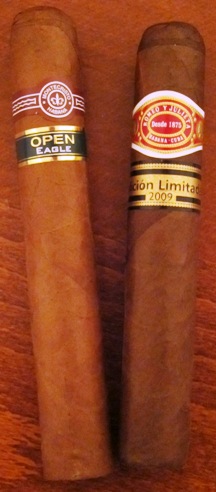
I didn’t have high expectations for this cigar, which was introduced a few years back as a premium Cuban for new cigar smokers. For that reason, I had avoided the entire Montecristo Open line until I smoked this 5.9-inch cigar.
What I found was pretty much as advertised: a mild smoke, with pleasant flavors and flawless construction that would probably suit a beginner nicely. Even though the flavors were a bit mild for my tastes, it had excellent balance and sweet cedar notes, and towards the end it added in some characteristic Cuban earthiness. Think of it as a tamer version of the Montecristo Edmundo.
Romeo y Julieta Duke EL 2009
Without a doubt, this is one of the best looking Cuban cigars I’ve seen in awhile. It has a dark, oily wrapper and perfectly squared triple cap. The 5.5-inch smoke was generally well-constructed,  except for needing multiple touch-ups to keep the burn even (which is disappointing for a cigar that can cost in excess of $20 each).
As for its flavors, the cigar reminded me of the 2007 Romeo y Julieta Escudos, with coffee, oak, and cocoa notes all apparent. Unfortunately, there was also a sourness that came and went throughout the cigar. Still, there was much to enjoy in this medium- to full-bodied Cuban.
Conclusion
The Montecristo Open Eagle was better than I thought, but ultimately I don’t like the Open blend as much as the regular Montecristos (the Petit Edmundo and classic Monte No. 2 both offer more flavor for less money). Meanwhile, the Romeo y Julieta Duke demonstrated some real potential and more interesting flavors, but was held back by the sour notes and inconsistent construction.
I fully expected to come out of this cigar face-off proclaiming the Duke the unanimous victor, but my ultimate conclusion isn’t so clear-cut. Ultimately, with some age, I think the Romeo y Julieta Duke will be the far superior cigar (particularly if you prefer a fuller-bodied smoke). Right now, though, the Montecristo Open is slightly better due to its balance.
–Patrick S
photo credit:Â Stogie Guys



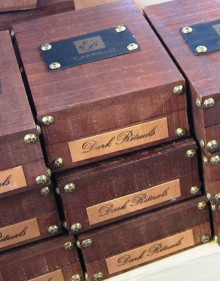
 The Retro Especiale just started to ship in late September, which makes this a good time to review the new line. It is comprised of a Honduran-grown Connecticut-seed wrapper with dual Nicaraguan and Mexican binders around filler from Nicaragua and the Dominican Republic. The wrapper, according to a press release, was specifically cultivated to allow “each of the cigar’s components to enjoy equal bearing on the overall taste of the cigar,†rather than having any one part dominate.
The Retro Especiale just started to ship in late September, which makes this a good time to review the new line. It is comprised of a Honduran-grown Connecticut-seed wrapper with dual Nicaraguan and Mexican binders around filler from Nicaragua and the Dominican Republic. The wrapper, according to a press release, was specifically cultivated to allow “each of the cigar’s components to enjoy equal bearing on the overall taste of the cigar,†rather than having any one part dominate.

 “We’re all in this together in these tough economic times,†said Nick Perdomo, the company’s president. “You should be able to afford great cigars at great price points.†So, in 2009 and 2010, Tabacalera Perdomo made many of their best-selling brands more affordable. Today, Perdomo creations are, generally speaking, a great value given the quality of the tobacco and the fine craftsmanship.
“We’re all in this together in these tough economic times,†said Nick Perdomo, the company’s president. “You should be able to afford great cigars at great price points.†So, in 2009 and 2010, Tabacalera Perdomo made many of their best-selling brands more affordable. Today, Perdomo creations are, generally speaking, a great value given the quality of the tobacco and the fine craftsmanship.
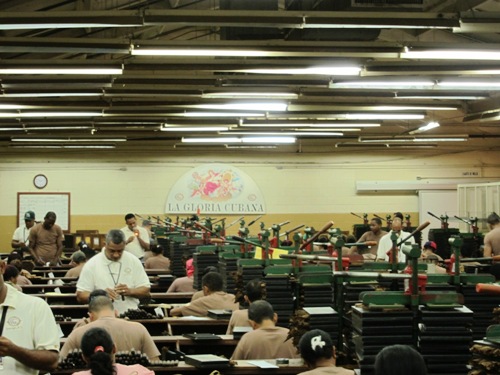
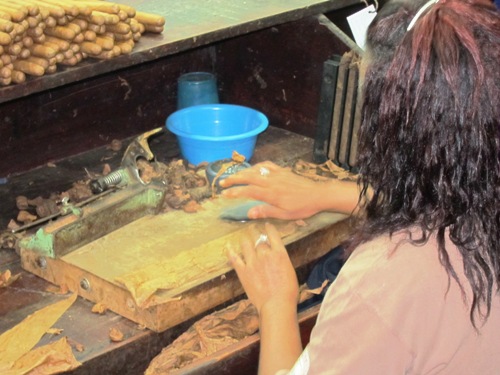
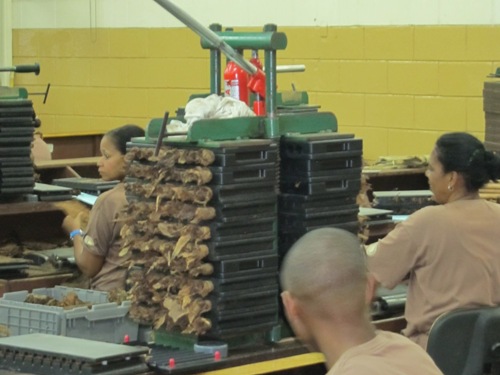
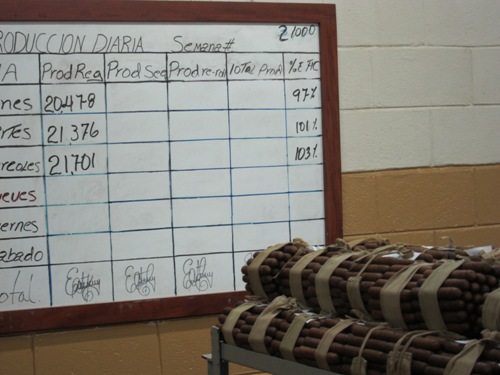
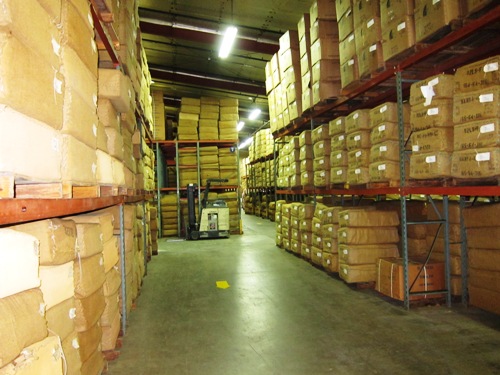
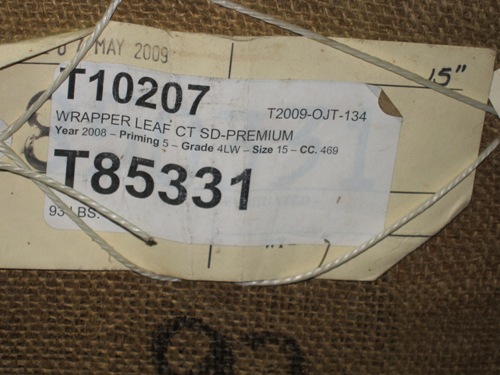
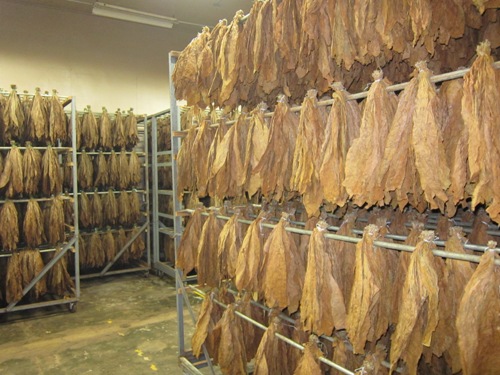
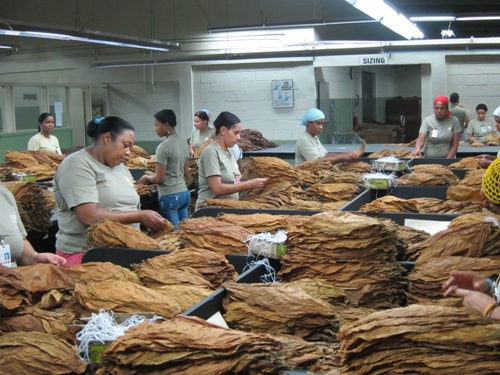
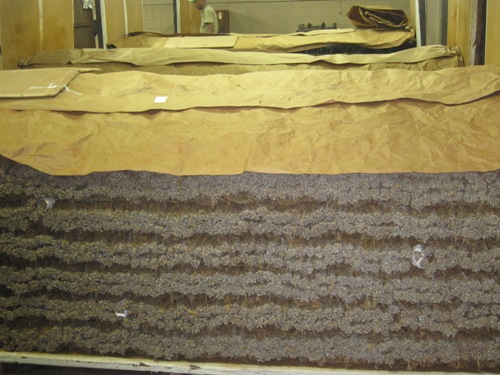
 Patrick Ashby
Co-Founder & Editor in Chief
Patrick Ashby
Co-Founder & Editor in Chief Patrick Semmens
Co-Founder & Publisher
Patrick Semmens
Co-Founder & Publisher George Edmonson
Tampa Bureau Chief
George Edmonson
Tampa Bureau Chief